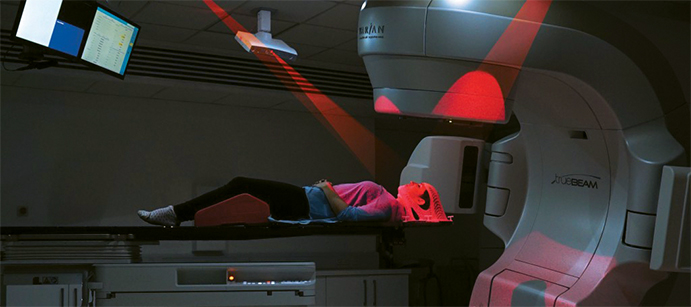 The finalists in the MacRobert Award offer a valuable insight into innovation that is making a difference in the world at large, says Hayaatun Sillem
The finalists in the MacRobert Award offer a valuable insight into innovation that is making a difference in the world at large, says Hayaatun Sillem
The finalists for the Royal Academy of Engineering’s coveted MacRobert Award for engineering innovation have just been announced. The three companies vying for the prize – Darktrace, Raspberry Pi and Vision RT – have each produced world-beating products in the UK. I had the privilege of accompanying the MacRobert judges on some of their visits to these companies which offered a valuable insight into innovation at work. While the products and companies cover diverse technologies and sectors, the visits showed they are united by more than the quality of their innovations.
For all three companies, the teams were inspired by a clear market need with significant societal impact: for Darktrace, it was the growing threat from cyber security; for Raspberry Pi, the declining engagement of young people in computing; and for Vision RT, the need to make radiotherapy safer and less stressful for cancer patients.
In 2016, cyber-security breaches were estimated to have cost UK businesses around £30m, in addition to disrupting many vital services and eroding public confidence in online systems.
Darktrace recognised the opportunity to apply machine learning to the cyber-security challenge, in the process pioneering a novel approach that moves the cyber-security industry beyond perimeter defence models to an intelligent detect-and-neutralise capability, described by one of the MacRobert Award judges as: “neighbourhood watch for the digital world”. In the four years since its launch, Darktrace has seen a meteoric take-up of its Enterprise Immune System software, with blue-chip customers in 60 countries and a global employee base of over 400 people, half of whom are in the UK.

Vision RT began in 2001 and has gone on to pioneer surface-guided radiation therapy
The team behind Raspberry Pi was inspired to create their now iconic products by concern at the declining numbers of applicants for computer science degrees. Recognising the pivotal role that early home computers such as the BBC Micro, Acorn Electron and ZX Spectrum had played in shaping their own enthusiasm for computing and advancing their understanding of programming, they set about creating a new, easy-to-use, low-cost, programmable computer that would be accessible and engaging for school-age children. Their unwillingness to compromise on cost, quality or usability ultimately led to the creation of an entirely new category of computing device that not only took the educational and maker markets by storm but also proved extremely popular for industrial use due to its stability and cost-effectiveness. With 14 million devices sold to date and an innovative business model whereby the trading company feeds its profits to the parent educational charity, Raspberry Pi is achieving stellar success in meeting both its economic and social objectives.
For Vision RT, the team’s motivation came from a desire to improve the experience of patients undergoing radiotherapy. Almost half the population will develop cancer at some time in their lives, and around half of all cancer patients require radiotherapy as part of their treatment. However, the radiation beam used to kill cancerous cells can also harm any healthy cells that are exposed to it, which means accuracy is vital. Vision RT began in an attic in 2001 and has gone on to pioneer surface-guided radiation therapy that helps doctors target cancerous tumours with pinpoint accuracy, reducing harmful collateral damage during treatment and eliminating the need for patients to have their skin tattooed. From the first prototype system deployed at the Royal Marsden Hospital in 2002, nearly 1,000 systems have now been sold and Vision RT has established itself as the global market leader. Its system has regulatory approval in 34 countries, and is available at the top five ‘best hospitals for cancer’ in the US, as well as a growing number of UK hospitals.
It is very heartening to see that all three finalists are also choosing to manufacture their hardware in the UK; they believe that UK manufacturing offers the best value, quality and reliability
The visits also brought to light another feature shared by the finalists: they all have links to the University of Cambridge. Darktrace is a Cambridge-based company and its technology is underpinned by Bayesian algorithms developed by mathematicians from the university. Raspberry Pi is also Cambridge-based and many of the team are graduates of the Cambridge computer science course. While Vision RT is headquartered in London, one of the founders studied at Cambridge. The strength of the Cambridge entrepreneurial ecosystem is well known and the pedigree of this year’s finalists reinforces the crucial role that universities play in training people who go on to create world-leading businesses – a role that is arguably more significant than the creation of ‘spin-out’ businesses from the universities.
The MacRobert Award is only open to companies with a strong UK presence whose innovation has been developed by a UK-based team so the provenance of the finalists is perhaps not surprising. However, it is very heartening to see that all three finalists are also choosing to manufacture their hardware in the UK. This is not for reasons of sentiment; rather, they believe that UK manufacturing offers the best value, quality and reliability. This is a trend we hope to see continue, and a useful reminder that despite the very real challenges faced by UK engineering companies, our innovation and manufacturing base can compete with the best internationally. We look forward to celebrating the achievements of our finalists – and finding out who wins
– at our awards dinner on 29 June.
Dr Hayaatun Sillem is deputy chief executive of the Royal Academy of Engineering




Project to investigate hybrid approach to titanium manufacturing
Sadly they will not be ordering any more presses from Wilkins & Mitchell http://www.historywebsite.co.uk/articles/Darlaston/WM.htm